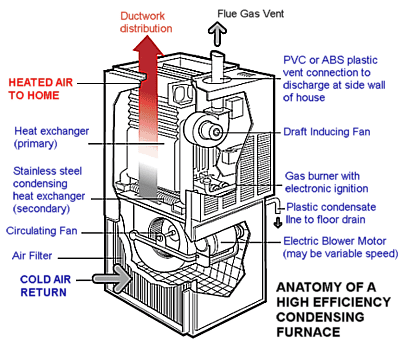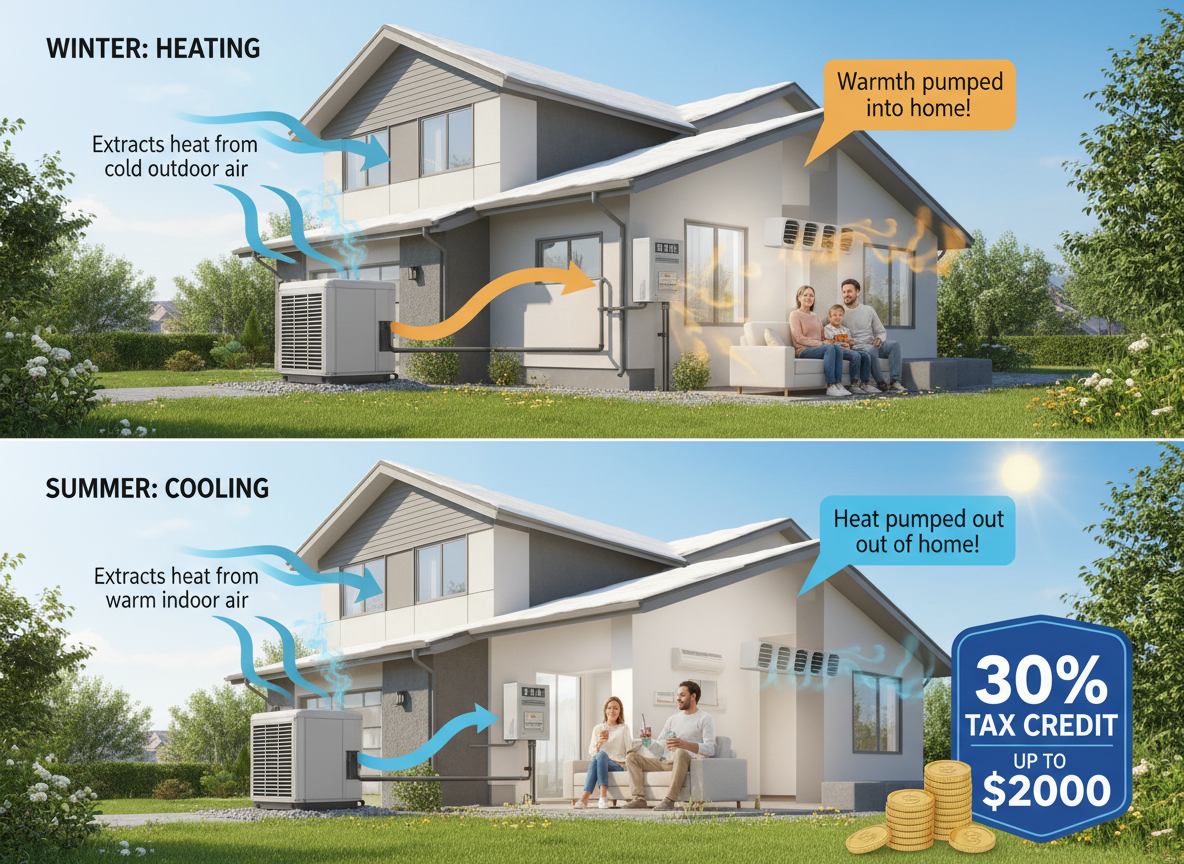
A furnace’s heat exchanger is the part of the furnace that heats the air, before it disburses it through ducts and registers. In a gas furnace the heat exchanger serves two purposes exchanging heat from the combustion process to the air blown over it and keeping toxic combustion gases separate from the heated air being dispersed. Since the gasses the heat exchanger holds are poisonous, the heat exchanger is attached to a flue that vents the gasses to outside the home. A cracked or damaged furnace is dangerous to you and your family. It can leak dangerous gasses into your home, including carbon monoxide.
What is the Cause of Heat Exchanger Cracks?
One of the factors leading to a crack is the age of the furnace itself. Over a long period of time the contracting and expanding can damage the metal and cause a crack to develop. A furnace usually only lasts about 15 to 20 years. Cracks can also be caused by improper maintenance. When a furnace does not get enough proper airflow or has a dirty air filter, the heat exchanger can overheat and suffer from excess expansion and contraction. Over time, this can result in cracks in the weaker spots in a heat exchanger. An oversized furnace with undersized ductwork can lead to improper airflow as well. Another cause for cracks is improper combustion of the gas. This could lead to overheating of the metal and the higher temperatures can cause cracks.
Symptoms of a Damaged or Cracked Heat Exchanger

Soot
If you see soot, a black carbon buildup, on the inside of the furnace it’s a sign that the system is not burning as cleanly as it should. If you see an increase in soot its usually a sign of incomplete combustion as a result of improperly adjusted burners or a cracked heat exchanger.
Unpleasant Odors
An improperly functioning heat exchanger will create strong and unpleasant odors similar to formaldehyde. It can cause headaches and other flu-like symptoms. If you think you smell formaldehyde contact a professional.
Visible Wear and Tear
When externals parts of your furnace show signs of wear tear, such as rust or cracks then it is highly possible that there is internal damage as well. Stress cracks are common and components can begin to rust from exposure to fumes or moisture from other sources.
If you notice any of the above symptoms contact us and we would be glad to assist you. You want to be sure to contact an honest contractor you can rely on to be on your side, and not one that will take advantage of your fear of carbon monoxide exposure.
How To Avoid Scams
If a technician states your furnace has a cracked heat exchanger please ask them to show you the crack and to provide written explanation of their diagnosis. An honest company will not have a problem with supplying this information to you. It is always wise to get a second opinion as well before you agree to any replacements.
A heat exchanger cannot be repaired. When a heat exchanged is damaged it must be replaced. Take into account the age of the furnace. If it is older than 10-12 years you may want to go with replacing the entire furnace. Although the upfront cost of replacing the entire furnace is higher, in the long run it would be cheaper than just repairing an old furnace.
Annual maintenance of your furnace is highly recommended. The heat exchanger is one of the most vital parts of the furnace and if not cared for properly it can be dangerous. Contact us today whether you need regular, timely furnace maintenance or fast, reliable, affordable furnace repair, call LA Construction Heating & Air Conditioning at (818) 341-3406. We have the knowledge and experience you need to keep your home and family warm, safe, and comfortable. We’re here to help with any questions you may have. Call us today to get the peace of mind you deserve. To learn more about services our company offers, please visit our homepage.






















.png)














